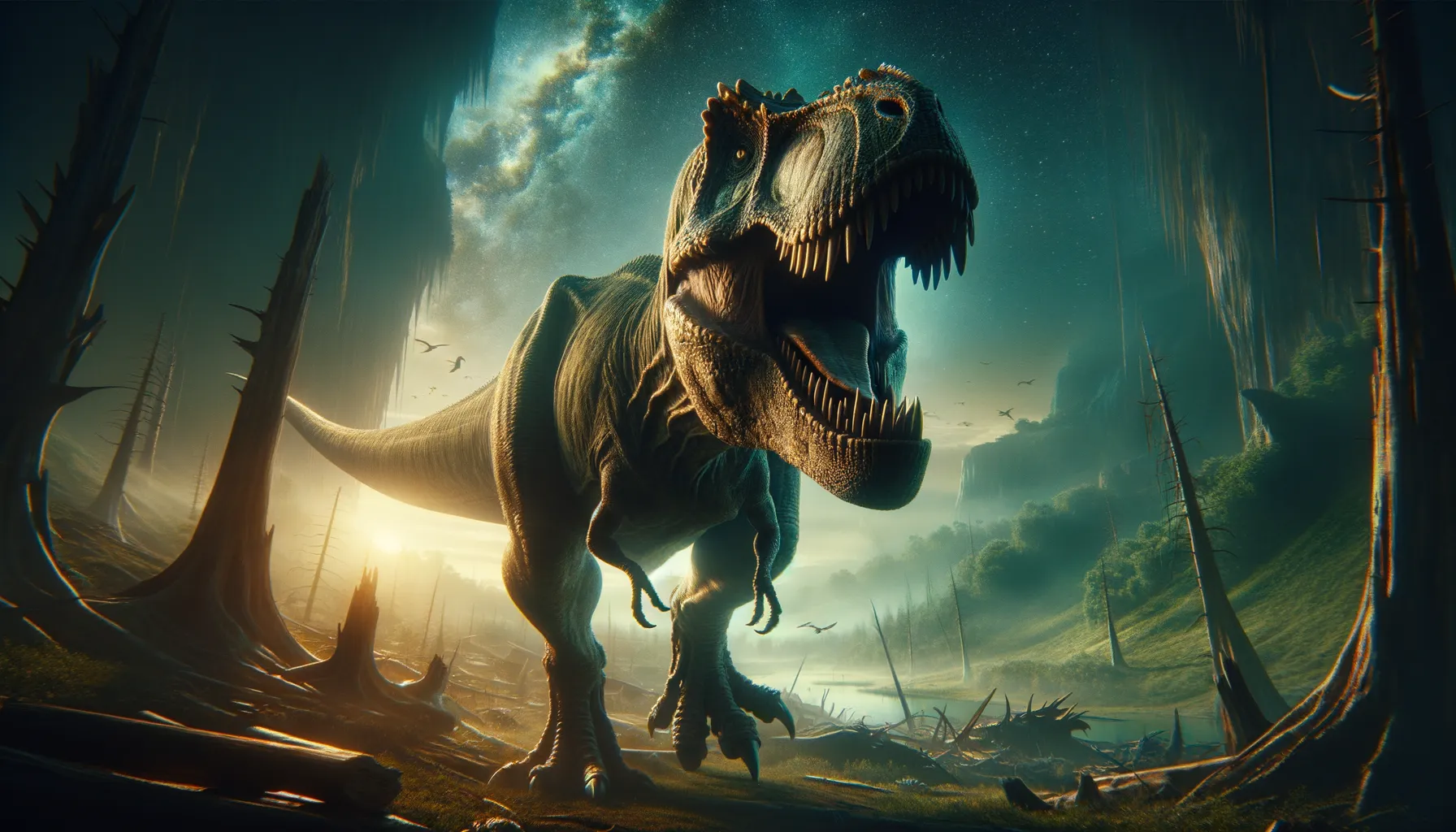
Tyrannosaurus
King of the prehistoric predators!
Period
Cretaceous
Length
Grew up to 40 feet in length.
Height
Stood about 12 feet tall at the hips.
Weight
Weighed between 8 and 14 tons.
Tyrannosaurus, often abbreviated as T. rex, was one of the most formidable predators of the Cretaceous period. With its massive skull balanced by a long, heavy tail, it was well-adapted for hunting large prey. Its powerful jaws and sharp teeth made it a fearsome carnivore, while its relatively small arms remain something of a mystery to paleontologists. The T. rex roamed across what is now North America.
Diet
The T. rex was a carnivore, preying on large herbivores. It is believed to have scavenged as well, using its sharp teeth to tear into carcasses. Its powerful bite could crush bones to access nutritious marrow.
Hunting
Scientists believe T. rex was both a hunter and a scavenger. It may have hunted in packs, surprising prey with its strong legs and quick bursts of speed. The animal's sharp senses might have made tracking wounded or weaker prey easier.
Environmental challenges
T. rex faced challenges such as competition with other large predators and a changing climate. The late Cretaceous was a time of volcanic activity and shifting continents. These changes possibly impacted its prey availability and overall survival. The T. rex also had to contend with diseases and physical injuries that could have affected its hunting success.
Speed
Could run up to 20 mph in short sprints.
Lifespan
Estimated to live around 28 years.
First discovery
First discovered in 1902 in Montana, USA.
Fun Facts
- Tyrannosaurus rex, often called T. rex, is one of the most famous dinosaurs and was a colossal carnivore.
- It lived around 68 to 66 million years ago during the late Cretaceous period.
- T. rex had incredibly strong legs and could run at speeds of up to 20 miles per hour.
- With teeth that could grow up to 12 inches long, T. rex's bite was powerful enough to crush bones.
- T. rex is believed to have had excellent vision and a keen sense of smell, making it a formidable hunter.
- Despite being a ferocious predator, T. rex probably fed on both living prey and carrion.
- The arms of T. rex were quite short in comparison to its massive body, but they were very strong and capable of lifting heavy prey.
Growth and Development
T. rex experienced rapid growth during its teenage years. Its bones show evidence of growth spurts, reaching its massive size in a relatively short time. Juveniles were fast and agile, aiding in their survival before reaching full size. This rapid development illustrates how energy-intensive its early life was.
Habitat
T. rex inhabited a variety of environments ranging from coastal and forested regions to open plains. Its adaptability allowed it to thrive in different ecosystems. The North American landscape was rich with diverse plant and animal life, providing ample hunting opportunities.
Interaction with other species
T. rex likely interacted with other dinosaur species, both prey and other predators. It competed with dromaeosaurids and other large carnivores for food. Fossil evidence suggests possible territorial disputes and confrontations with other T. rex individuals.
Natural lifespan
In the wild, a T. rex could live around 20 to 30 years.
Reproduction
T. rex laid eggs, likely in nests made of vegetation. Fossilized embryos indicate parental investment in offspring. The young may have been cared for by adults, at least for a short period after hatching. Clutches probably contained multiple eggs, ensuring some offspring survived to adulthood.
Social behaviour
While often depicted as solitary, some evidence suggests that T. rex might have engaged in complex social behaviors, potentially hunting in groups. Communication through vocalizations and scent marking may have helped establish territories or social hierarchies. Young T. rexes may have stayed together to improve hunting success.
Fossil locations
Fossils have been primarily found in the western United States and Canada. Significant sites include Montana, South Dakota, and Alberta. These locations provided a wealth of information about the dinosaur's biology and lifestyle, thanks to well-preserved bones and teeth. Fossils discovered offer key insights into T. rex's physical structure and habits.
